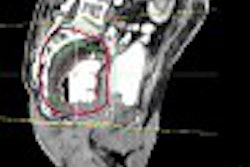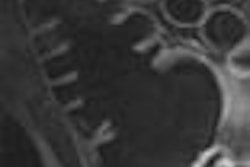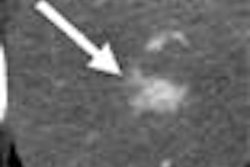The benefits of fusion imaging with PET/CT continue to unfold. In a recent study of pediatric oncology patients at the University of California, Los Angeles Medical Center, the modality demonstrated its capabilities in a head-to-head comparison with PET alone.
"Combined PET/CT imaging has been shown to improve diagnostic accuracy and staging in adult oncology, particularly in head and neck and lung cancer. The role, however, of combined PET/CT imaging in pediatric oncology has not been evaluated," said Dr. Ashok Panigrahy in a presentation at the 2003 RSNA conference in Chicago.
The research team set out to evaluate the value of using combined PET/CT imaging compared with PET imaging alone in the characterization of lesions visualized with PET in pediatric oncologic disease.
"Our imaging protocol was to perform a whole-body CT at 60-80 mAs with 4-mm collimation, and then an FDG-PET acquisition, which was based on weight," Panigrahy said. The group used a Reveal PET/CT system (CTI Molecular Imaging, Knoxville, TN).
Due to concerns that the use of CT contrast would interfere with the attenuation correction of the PET imaging, the group initially conducted its studies with no contrast and performed separate CT studies with both oral and intravenous contrast.
"We have now optimized our protocol to be able to give intravenous contrast before the CT portion of the exam, so that only one CT scan is needed at this time," he said. The imaging process included multiplanar reformatting, which permitted the researchers to precisely localize the anatomic regions of the lesions.
After a whole-body CT image was acquired for photon attenuation correction, multiple three-minute bed position acquisitions were obtained along the length of the patient’s body, from the mid-thigh to the base of the skull, Panigrahy said.
The researchers looked at 55 serial PET/CT examinations performed on a total of 38 pediatric and young adult patients. The age range was between 3-24 years, with a median age of 16 years.
"Our group of patients was heterogeneous, with the largest group having Hodgkin’s lymphoma," he said.
In addition to Hodgkin’s disease, the patients’ diagnoses included hepatoblastoma, papillary thyroid carcinoma, Ewing’s sarcoma, synovial sarcoma, osteosarcoma, desmoplastic sarcoma, medulloblastoma, testicular carcinoma, and melanoma.
The researchers initially identified and characterized lesions with PET imaging. They then retrospectively compared the lesions between the PET and the PET/CT images. The last step in the study was to compare the changes in lesion characterization between the PET and PET/CT images to clinical outcome with respect to oncologic staging, Panigrahy said.
"Overall, 85 lesions were identified on the PET imaging alone. Compared with PET, we found that combined PET/CT imaging provided additional value for lesion characterization in 78% of lesions and in 88% of patients. In 68% of the patients, the PET/CT images resulted in a significant change in patient management with respect to oncologic staging," he said.
Specific examples of the added value of combined PET/CT images noted by Panigrahy and the research team were:
- Better anatomic localization of hypermetabolic foci in Hodgkin’s disease lymph nodes not considered significant due to CT size criteria.
- Better anatomic localization and differentiation of postoperative changes compared with tumor recurrence.
- Better anatomic localization and differentiation of hypermetabolic foci in the head and neck region, which correlated with normal anatomic structures demonstrating brown fat or normal physiologic function.
"In terms of future direction, we will need to optimize our protocol to be able to do a diagnostic CT study and PET study without affecting the PET imaging attenuation correction as well as minimize radiation exposure," he said. "Also, we will need to work out specific indications for using PET/CT, with lymphoma probably being one of them."
By Jonathan S. BatchelorAuntMinnie.com staff writer
February 27, 2004
Related Reading
Homemade GI contrast solution optimizes PET/CT imaging without artifacts, November 30, 2003
PET/CT is the team to beat for NSCLC staging, November 17, 2003
SPECT coregistration improves treatment at pediatric care center, June 18, 2002
Swiss researchers optimize CT-PET scanning protocols, March 4, 2002
Copyright © 2004 AuntMinnie.com



















